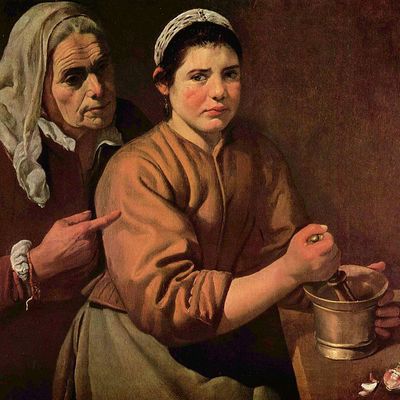
It’s become a frequent, depressing talking point by now: Take a man and a woman, equally qualified, and the woman will make, on average, 77 cents on the dollar as compared to the man.Though often repeated by pundits, journalists, and politicians — including the president — the 77 cents narrative isn’t quite true. Things are more complicated than that; it appears more likely, as a recent episode of Freakonomics argued, that women are often doing different work: work that pays less.
The reasons for this are varied and complicated. In some cases, women really are paid less to do the same work. In other cases, they end up in lower-paying jobs as a result of institutional and cultural forces that nudge them towards careers with greater flexibility or more time at home.
According to Travis Wiseman, director of the International Business program at Mississippi State University, and Nabamita Dutta of the University of Wisconsin, researchers have largely ignored the cultural factors that shape gender roles in the workplace. As the two researchers note in a recent working paper, there has been little attention given to one cultural factor in particular: religiosity.
To test that variable, Wiseman and Dutta looked at how two different measurements of religiosity among residents of different states — belief in God and participation in religious activity — correlated with the gender wage-gap in those states. Even after controlling for age, education, marital status, occupation, time in the workforce, and other factors, they found that this correlation was rather significant: specifically, the that a three percent increase in a state’s religiosity related to a one percent increase in its gender wage-gap.
These findings are consistent with the idea that religious beliefs and institutions, even informal ones, can shape social interactions and thus economic behavior. Women’s roles as mothers and workers are shaped by religious norms and customs, even when those norms aren’t directly dictated by religious dogma.
Traditional religious attitudes might also affect employer behavior, shaping managers’ decisions about whom to hire or lay off, or a family’s decision about who should be the primary breadwinner. Zooming out, the state government’s distribution of resources — like education, health care, and parental leave — can also be shaped by prevailing cultural norms that are shaped by religious attitudes. It stands to reason that policies that have been shown to promote gender parity, like pay-transparency legislation or investments in high-quality child care, might face heavier opposition in those states where religious institutions exert more influence. (That said, the working paper didn’t make any of these claims directly — rather, it provided a jumping-off point for some informed speculation.)
Religion isn’t typically the first thing economists look at to explain economic behavior, but Wiseman and Dutta aren’t the first to examine potential links. In her own research, University of Vermont professor Stephanie Seguino has shown that people who frequently attend religious services or have strong religious beliefs have “significantly more” gender-unequal attitudes than people who are less religious. “Just as we see an unconscious bias in issues of race, I think religiosity contributes to this unconscious bias that privileges men’s pay and men’s access to jobs over women,” Seguino said.
Still, she said, the impact of religion on economic behavior remains under-examined. And John Bartkowski, a sociologist who studies the intersection of religion and gender at the University of Texas at San Antonio, agreed. “Decisions that people make in the family and structural impediments that people face in the family influence their workplace decisions,” he said. “A lot of scholars have ignored that.”
Despite the fact that the United States is a very religious country, most American economists and sociologists tend to focus on structural factors affecting the gender wage-gap, like education, workplace discrimination, and government policy, he said. Bartkowski believes that more fine-tuned data, like county or rural/urban breakdowns that reflect differences in religious denominations, might show how some religious cultures skew the wage gap even more. For example, he explained, conservative Protestants tend to be much more traditional in their gender attitudes and gender practices than their mainline counterparts.
Both Dutta and Wiseman agree that more research needs to be done, particularly on the intersection of religion with race, class, and ethnicity. Dutta said she hopes to measure individual slivers of religious culture, among them trust, obedience, respect, and tolerance, to see whether or not they affect the wage gap.
But in the meantime, the two researchers say policy makers shouldn’t ignore the fact that religion can shape economic behavior in profound ways. “If you’re thinking that a waving of a regulatory wand will fix the playing field, it may not work in places where people hold different belief systems,” said Wiseman. Human economic behavior is far more complicated that that, it turns out — and religion is a big driving factor.




